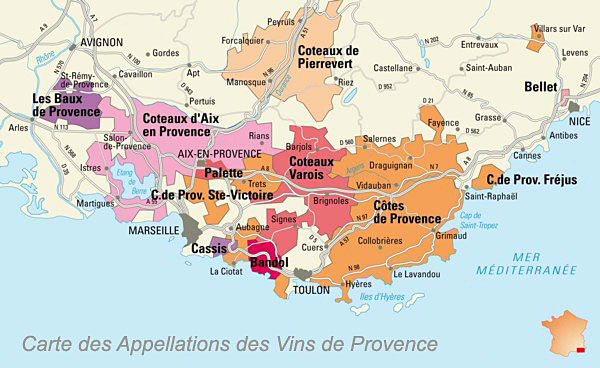La Provence
The Mediterranean, the Alps. Between these two wonders of nature, a third, shaped by man: the Provençal vineyard. Its radiant, sun-drenched vines extend over 200 kilometers across the departments of Var, Bouches-du-Rhône and part of the Alpes-Maritimes. Under the southern sun, the landscape is breathtaking. When setting foot in the vineyards, there is an air of vacation. This is probably why the grapes there are so beautiful and why its wines are so good.
A POSTCARD TERROIR
The beauty of the Provençal landscape is unique. Unforgettable terrain. Among the remarkable sites are the Sainte-Victoire mountain, the Sainte-Baume massif, the Maures or the volcanic Estérel massif. Two large geological units coexist, one limestone on the western and northern part of the vineyard and the other, crystalline on the eastern part, facing the sea.
AN IDEAL SOIL FOR VINES
To these two geological units, limestone and crystalline, correspond two plant formations characteristic of the Mediterranean: scrubland on limestone soil and maquis on crystalline soil. Neither of these two types of vegetation can provide significant humus inputs. As a general rule, the soils of viticultural Provence are therefore poor but well drained. These shallow grounds, without excess humidity, are perfectly suited to the Mediterranean plant that is the vine.
THE MISTRAL PLAYS WITH THE SUN
The Mediterranean climate is perfect: sunny, dry and hot. The vines have around 2800 hours of sunshine per year. The winds are numerous and are an integral part of the region’s climate. The most violent and best known is the Mistral. Particularly dry, it allows the vineyard to be refreshed, but above all to clean it up, thus protecting it from diseases linked to humidity.
Orders with a minimum of 30 bottels (5 x 6 bttls) per delivery are possible.



